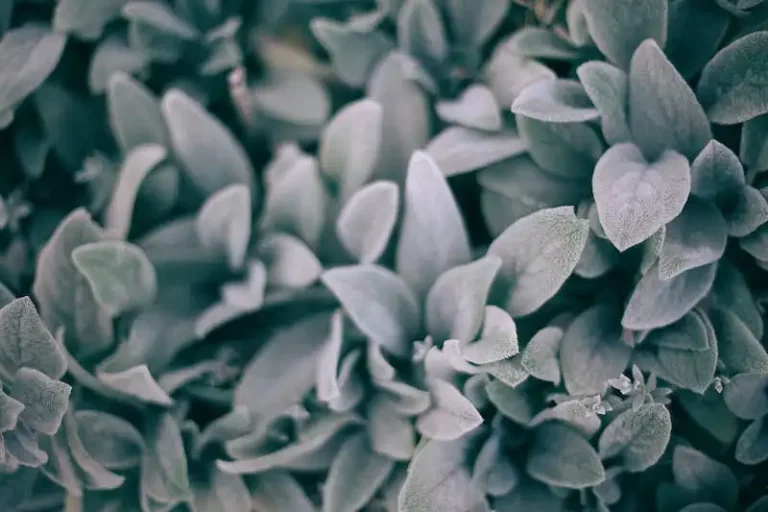When it comes to the care of peace lilies, watering plays a crucial role in their health and overall well-being. Proper watering is essential for their growth and to ensure that they bloom beautifully. However, improper watering can lead to various problems and cause the leaves of the lily to turn brown.
The best method for watering peace lilies is to give them a thorough soak, but not too often. Peace lilies are native to tropical rainforests, where they receive regular rainfall followed by periods of dryness. Mimicking this natural watering pattern is the key to keeping your peace lily happy and healthy.
When watering your peace lily, you should allow the soil to dry out a bit before watering again. This will prevent overwatering, which is one of the main causes of brown leaves. It is important to note that peace lilies prefer to be slightly underwatered rather than overwatered. So, it is better to underwater them than to overwater them.
One great way to ensure that your peace lily is being watered properly is to give it a good soak in the sink or a bathtub, allowing water to trickle out through the drainage holes at the bottom of the pot. This way, the plant can absorb as much water as it needs without the risk of sitting in excess moisture. Once the dripping stops, you can return the plant to its usual spot.
During the summer months or times of hot weather, peace lilies may require more frequent watering to prevent their foliage from wilting. However, in the winter months, the frequency of watering should be cut down. It is important to pay attention to the weather and adjust your watering schedule accordingly.
To further ensure good drainage, using a well-draining potting soil is essential. Avoid using heavy soils that retain excessive moisture, as this can lead to overwatering and root rot. Additionally, make sure the pot you use has drainage holes at the bottom to allow excess water to escape.
Summary
The best method for watering peace lilies involves providing a moderate amount of water while allowing the soil to dry out between waterings. By mimicking their native environment and avoiding overwatering, you can ensure the best possible care for your peace lily. Pay attention to the weather, use well-draining soil, and give them a good soak without letting them sit in excess moisture. Following these easy steps will keep your peace lilies healthy and vibrant for years to come.
Source: Plant FAQs
How to Properly Plant and Care for Peace Lily Plants
If you’re looking for a low-maintenance plant that adds a touch of elegance to any space, peace lilies are a great choice. Native to tropical regions, peace lilies are known for their attractive foliage and beautiful white flowers. Planting and caring for peace lily plants requires attention to detail, but with the right method, you can ensure that your plants thrive.
Planting Peace Lilies
When planting peace lilies, it’s important to choose the right pots and potting soil. Peace lilies prefer well-draining soil, so look for a pot with drainage holes to prevent overwatering. Use a high-quality potting mix that retains moisture while allowing excess water to drain away.
To plant your peace lily, fill the pot about halfway with potting soil. Gently remove the plant from its nursery pot, being careful not to damage the roots. Place the plant in the pot and fill in around it with more potting soil until the roots are covered. Press the soil down lightly to secure the plant.
Caring for Peace Lilies
Proper watering is crucial for the health of your peace lilies. Although peace lilies are relatively tolerant of low light conditions, they should be watered thoroughly whenever the top inch of soil feels dry to the touch. Avoid overwatering, as this can lead to root rot and other negative consequences for the plant. To ensure you’re not overwatering, allow excess water to drain away and never let your plant sit in a saucer of water.
Another care tip for peace lilies is to avoid wet foliage. Watering from the top can lead to leaf spots and the development of fungal diseases. Instead, water at the base of the plant and try to keep the foliage dry.
Peace lilies are also sensitive to temperature and humidity. They prefer temperatures between 65 and 85 degrees Fahrenheit and thrive in high humidity. If you live in a dry climate or have low humidity in your home, consider using a humidifier or placing your peace lily near a source of humidity, such as a bathroom.
Summary
- Choose pots with drainage holes and well-draining potting soil for your peace lilies.
- Water your peace lilies thoroughly whenever the top inch of soil feels dry.
- Avoid overwatering and ensure excess water can drain away.
- Water at the base of the plant to prevent leaf spots and fungal diseases.
- Provide your peace lilies with temperatures between 65 and 85 degrees Fahrenheit.
- Consider using a humidifier or placing your peace lily near a source of humidity in dry climates or low humidity environments.
By following these tips, you can ensure that your peace lilies thrive and add beauty to your home or garden. If you have any more questions or need further guidance, check out our FAQs section or seek advice from fellow peace lily plant parents. Good luck!
How to Plant Peace Lilies
Planting peace lilies is a simple and easy process that requires several key steps to ensure the health and well-being of your plant. Here are some tips to help you plant your peace lilies:
- Choose a pot that has drainage holes at the bottom. This is important to prevent overwatering, as peace lilies do not like to sit in water.
- Fill the pot with a well-draining potting soil. Peace lilies prefer soil that is rich in organic matter and drains well.
- Place your peace lily in the pot, making sure that it is centered and secure.
- Water your peace lily thoroughly, ensuring that the excess water drips off. Peace lilies like to be evenly moist but not overly saturated.
- Make sure to keep the soil slightly moist, but avoid overwatering. Overwatering can lead to root rot and other diseases, so it’s important to allow the soil to dry out a bit between watering sessions.
- During the winter months when the peace lily’s growth slows down, water less frequently but make sure to never let the soil completely dry out.
- If you notice that the leaves are turning yellow or brown, it may be a sign that you’re overwatering. Adjust your watering habits accordingly.
- Another important care tip is to provide your peace lily with enough humidity. You can do this by placing a tray of water near the plant or misting the leaves regularly.
By following these simple steps and paying attention to your peace lily’s watering needs, you can ensure that your plant stays healthy and thrives in its new home. Remember, a little bit of water goes a long way, so it’s always better to underwater than to overwater.
What Causes Brown Tips on a Peace Lily
Peace lilies are beautiful houseplants that can add a touch of elegance to any indoor space. However, if you notice brown tips on the leaves of your peace lily, it is a sign that something is amiss with its care.
One of the most common causes of brown tips on peace lilies is overwatering. Peace lilies do not like to be constantly wet, and their roots can easily rot if they are sitting in water for too long. To avoid overwatering, make sure to allow the top inch or so of soil to dry out before watering again. It’s also important to ensure that your peace lily is planted in a well-draining potting mix and that the pot has drainage holes.
If you tend to forget to water your plants, you might be tempted to give your peace lily a good soak to make up for it. However, this can actually do more harm than good. Peace lilies are native to tropical rainforests, where they grow in the well-draining soil and receive frequent but small amounts of rainfall. Mimicking these conditions by providing your peace lily with small, frequent waterings is the best way to keep it happy.
In addition to overwatering, there are a few other possible causes of brown tips on peace lilies. Excess salt buildup in the soil can cause the tips of the leaves to turn brown. This can be prevented by using a good-quality potting mix and flushing the soil with water every few months to remove any accumulated salts.
Another possible cause of brown tips is low humidity. Peace lilies prefer high humidity, so if the air in your home is dry, it can lead to brown tips on the leaves. To increase humidity around your peace lily, you can place a tray of water near the plant or use a humidifier.
Finally, brown tips can also be caused by direct sunlight. Peace lilies prefer bright, indirect light, so placing them in a spot where they receive too much direct sunlight can cause the leaves to burn.
In conclusion, if you notice brown tips on your peace lily, it’s important to evaluate its care and make any necessary adjustments. Avoid overwatering, use a well-draining potting mix, flush the soil occasionally to remove salts, provide high humidity, and avoid placing your peace lily in direct sunlight. By following these care tips, you can help your peace lily thrive and enjoy its beautiful white blooms.
Source: example.com




